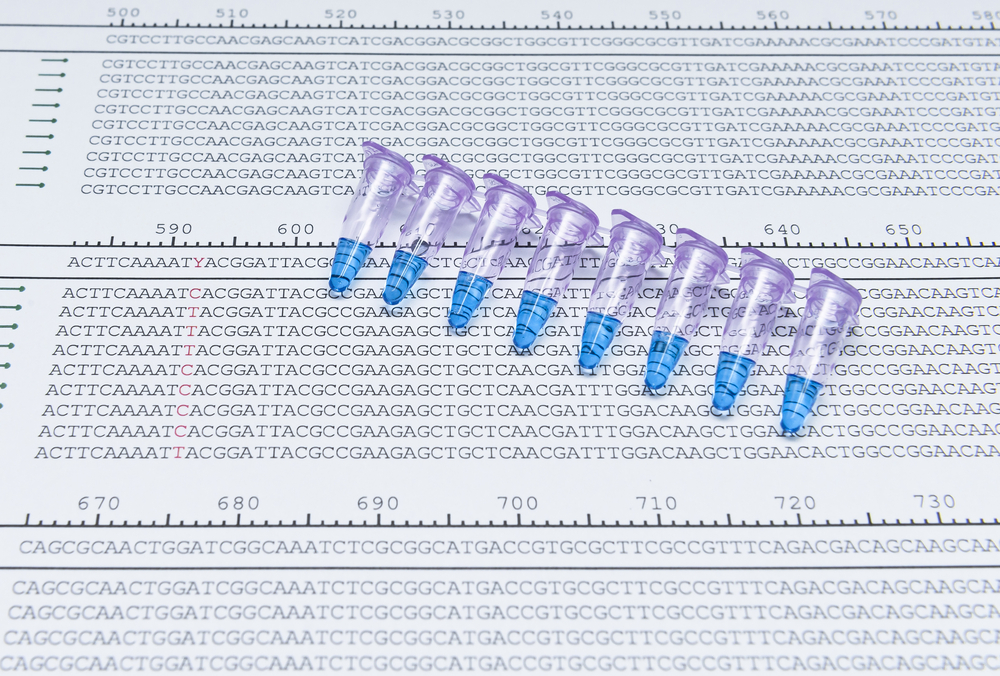#IARC2017 – New Gene Sequencing Techniques May Lead to Faster Diagnosis, Better Therapies

Recent advances in next-generation sequencing techniques are helping to revolutionize genetic testing, potentially ending the “diagnostic odyssey” that ataxia patients can now go through, researchers in Germany said in the opening presentation of the 2017 International Ataxia Research Conference (IARC) in Pisa, Italy.
But with such advances come fresh questions and challenges, Matthis Synofzik at the Hertie-Institute for Clinical Brain Research in Tübingen said in the Wednesday presentation. It was part of the “Molecular Basis of Disease” first session at IARC 2017, which runs through Sept. 30.
The presentation was titled “The rapid progress in next-generation genetics of ataxias: insights, challenges, and next steps.”
Next-generation sequencing (NGS) techniques analyze information encoded in a person’s genome with unprecedented throughput, scalability, and speed. When researchers started to apply NGS to the field of inherited diseases — which includes Friedreich’s ataxia and other ataxias — they found the incidence of some diseases, like recessive ataxias, to differ from what had been detected using older methods.
Friedreich’s ataxia is the most common inherited recessive ataxia (meaning two copies of the abnormal gene — one from each parent — are present), followed by autosomal recessive spastic ataxia of Charlevoix-Saguenay (ARSACS), autosomal recessive cerebellar ataxia type 1 (SYNE1), and hereditary spastic paraplegia (SPG7).
Several new ataxia-related genes were also identified by NGS, allowing for a molecular finding of ataxia in patients previously undiagnosed. Recognizing, and ranking, the prevalence of ataxias may help to drive research and funding into new efforts for treatments.
Using NGS techniques, researchers also saw a sharing not only of genes and disease features — established under a clinical classification system based on clinical diagnosis — but also disease mechanisms and cellular processes. This suggests that current classifications may need to be replaced by ones that are more dynamic, taking into account the overlap of genes and features among different ataxias.
“NGS, rather than a single-gene diagnosis, should be the 1st diagnostic tool,” Synofzik said in his presentation. “The boundaries for these diseases [ataxias] are dissolving … We have to go beyond the traditional clinical classification and go into a molecular classification.”
He also believes that NGS-guided observations might be translated into a shared therapeutic approach, one that targets underlying mechanisms that are similar across several ataxias.
One important challenge revealed by NGS, Synofzik highlighted, is the identification of relevant genomic variations in patients with different types of ataxias. These variants remain largely uncharacterized, and understanding how they impact the disease is crucial.
NGS, indeed, may allow for genomic errors — mutations — to be identified on an unprecedented scale, and possibly to be seen as underlying disease features found in different ataxia patients.
However, Synofzik emphasized that several ataxias remain unsolved — and improvements on NGS sequencing are still needed. He presented a report of 182 early-onset ataxia cases in which, he said, about “70% remained unsolved even after NGS sequencing.”
He suggested that the ataxia field establish an “Ataxia Exome Consortium,” much like those already in place for Alzheimer’s and amyotrophic lateral sclerosis (ALS). In these consortiums, investigators work together to collect sequencing data from a wide variety of large-scale projects, and to make such data available to the wider scientific community.
The creation of large-scale sharing platforms, like the GENESIS platform, could take maximum advantage of data being generated through NGS sequencing.
“The genetic stratification of ataxia patients allowed by NGS is indeed the major bridgehead for identifying special causal pathway mechanisms and preparing targeted molecular treatments in ataxias,” Synofzik and colleagues wrote in their study. “Multi-center consortia … have now started to create a systematic translational pipeline, facilitating all the crucial translational steps from NGS to standardized preclinical trials, to … transnational trial-ready cohorts in genetic ataxias.”
According to Synofzik, the next step is to “move from NGS gene hunting to trial ready-cohorts,” in order to combine basic science and clinical efforts. “We have to do this in parallel,” he said.
The team believes that collaborative registries and biobanking are the key.






